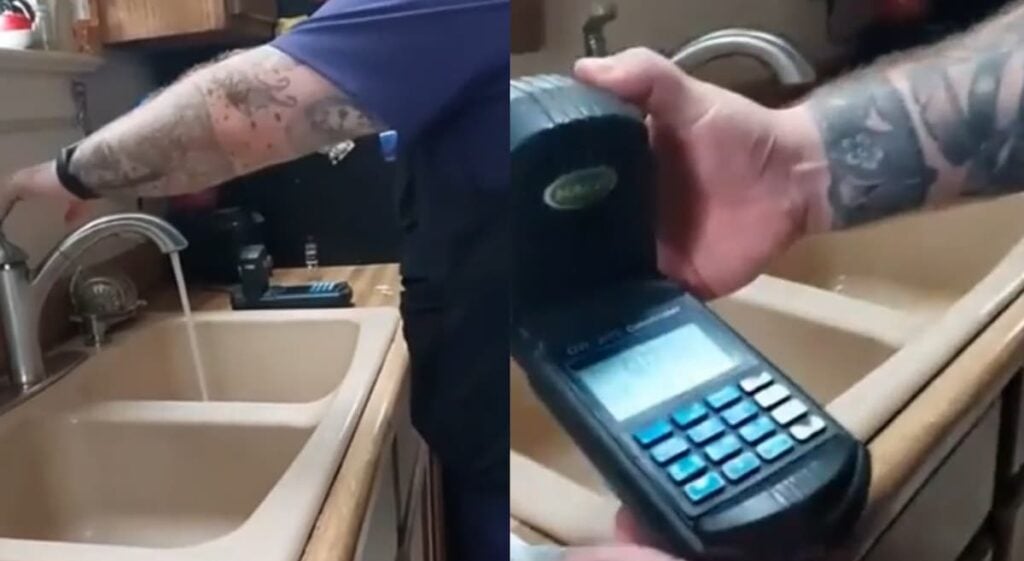A viral video has ignited outrage across Indiana after an Indiana Department of Environmental Management (IDEM) agent was filmed confirming that chlorine levels at a home in Alexandria measured just 0.09 ppm, which is less than half of what’s widely believed to be the legal minimum required to ensure safe, disinfected drinking water.
At the heart of the controversy: a visibly concerned resident who captured the IDEM employee testing her home’s tap water. “That’s it?” she asks, as the chlorine residual clocked in at nearly undetectable levels. Not long after, she claims, her child was hospitalized with symptoms consistent with gastrointestinal illness.
Though the precise cause of the illness remains unverified, the low chlorine reading has stirred accusations of government negligence, a lack of transparency, and systemic infrastructure failures in Alexandria, a small town just northeast of Indianapolis.
Online outrage quickly ballooned into confusion over what’s actually required by law. Many Redditors claimed that the Environmental Protection Agency mandates a minimum chlorine residual of 0.2 ppm at consumer taps. However, water professionals chimed in with corrections: the federal regulation requires 0.2 ppm at the point of entry to the distribution system, not necessarily at each endpoint in the network.
Still, others argued that any reading below 0.1 ppm in residential pipes could indicate ineffective disinfection, especially in underused or “dead-end” segments of the system. This raises real concerns for residents at the fringes of the distribution network, like the woman in the video.
One Redditor, claiming civil engineering experience in municipal utilities, offered a plausible explanation: water stagnation.
“If she has an extra-large water main outside her house and she’s the only one drawing from it, the water might not be cycling fast enough,” they wrote. “The solution? An automatic flushing hydrant at the end of the line.”
Other professionals echoed this assessment, describing how underused mains can accumulate low-residual water over time, potentially compromising disinfection quality, particularly during warmer months.
But the explanations haven’t done much to calm the storm.
Internet sleuths quickly uncovered past articles, though some appear to be self-published on questionable platforms, accusing Alexandria officials of mismanaging public funds and downplaying sewage issues. One headline read: “Councilman Blocks Public Oversight Amid Alexandria Sewage Crisis.”
Whether or not those claims hold water, the situation adds to growing skepticism about the town’s infrastructure management and communication with residents.
“This isn’t just about chlorine,” one commenter wrote. “It’s about trust, and people don’t trust their water, or the people managing it.”
According to local officials and state documents, city-wide water testing was conducted earlier this month across multiple sites. Most locations, including a government building just 400 feet from the affected home, showed acceptable chlorine levels. That suggests the problem is isolated, but also raises questions about how thoroughly the town monitors its extremities and how quickly it can respond when things go wrong.
It’s a network problem. And as one industry insider put it: “There are solutions, but it takes time –and government dollars– to solve.”
In the meantime, one family is left shaken, a child was hospitalized, and the rest of Alexandria is left wondering: Can we trust what comes out of our taps?
Editor’s Note: IDEM has not issued a formal statement regarding the chlorine readings or hospitalization at this time. The EPA maintains that any detectable residual chlorine (even below 0.2 ppm) may still indicate effective disinfection, depending on system design. However, experts agree that persistent low readings should be investigated.








